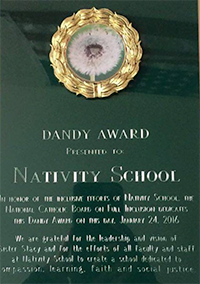Does Self-Contained Special Deliver on Its Promise?
Studies Shedding Light on the Negative Effects of Educating Children in Self-Contained Classroom
— Pope Benedict XVI”
- No educational advantage of a self-contained, segregated classroom, only disadvantages. (Buckley, S.J., Bird, G., Sacks, B. & Archer, T., 2006)
- No academic advantage (Falvey, 2004)
- Inferior quality of IEP goals (Hunt & Farron-Davis, 1992)
- Poorer quality of instruction in academic skills (NCLB, Wheelock, 1992)
- Lack of generalization to regular environments (Stokes & Baer, 1977)
- Disruption of opportunities for sustained interactions and social relationships with typical students (Strully & Strully, 1992)
- Decrease in the confidence that general education teachers have for teaching diverse learners (Giangreco et al., 1993)
- Absence of appropriate role and behavior models (Lovett, 1996)
- Negative impact on classroom climate and student attitudes about differences (Fisher, Sax, & Rodifer, 2000)
- Children with Down Syndrome who are educated in special classrooms are more than 2 years behind on expressive language than children with Down Syndrome who are fully included (Buckley, DownsEd)
- No gains were made in speech and language in the students that were in special classrooms (Buckley, DownsEd)
- No improvements in school achievements (Cuckle, 1998)
- There is no such thing as a self-contained world, educating students in a self-contained room does not allow the students to learn all of the other things they will need to survive in this very large world (Decatur & Bassett, 2007)
- Students who stay their whole career in a self-contained classroom, have a 5 percent shot at a diploma. And that is immoral,” said the DOE’s chief academic officer, Shael Polakow-Suransky. “We cannot allow thousands of kids to be confined to failure.”
- Disruption of sustained opportunities for social relationships (Strully & Strully, 1992)
- Disruption of Maslow’s Theory that “all human beings need to belong before they can achieve” (Kunc, 1992)




